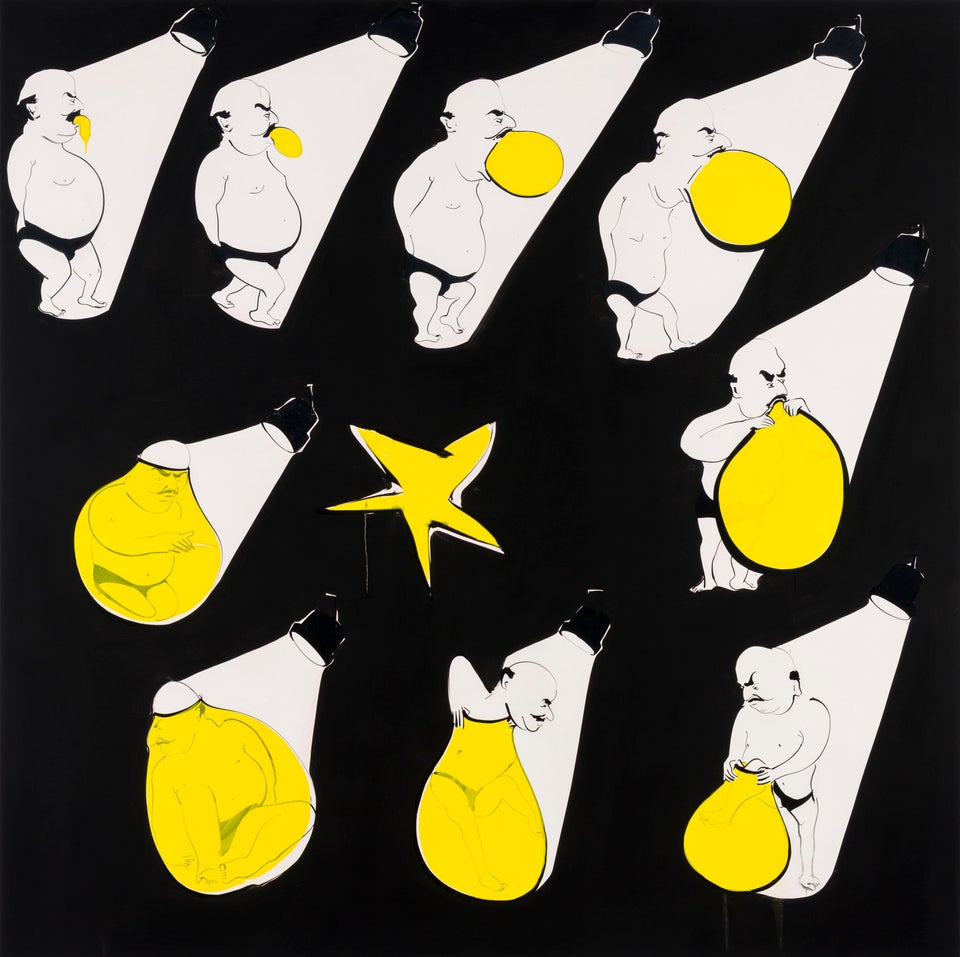How do westerners view the Middle East? Iranian-born artist and filmmaker Shoja Azari explores the complexity of the question in his exhibition "Fake -- Idyllic Life." Azari weaves together past and present, mythology and current events, painting and video to capture a vivid and multilayered rendering of the convoluted perception.
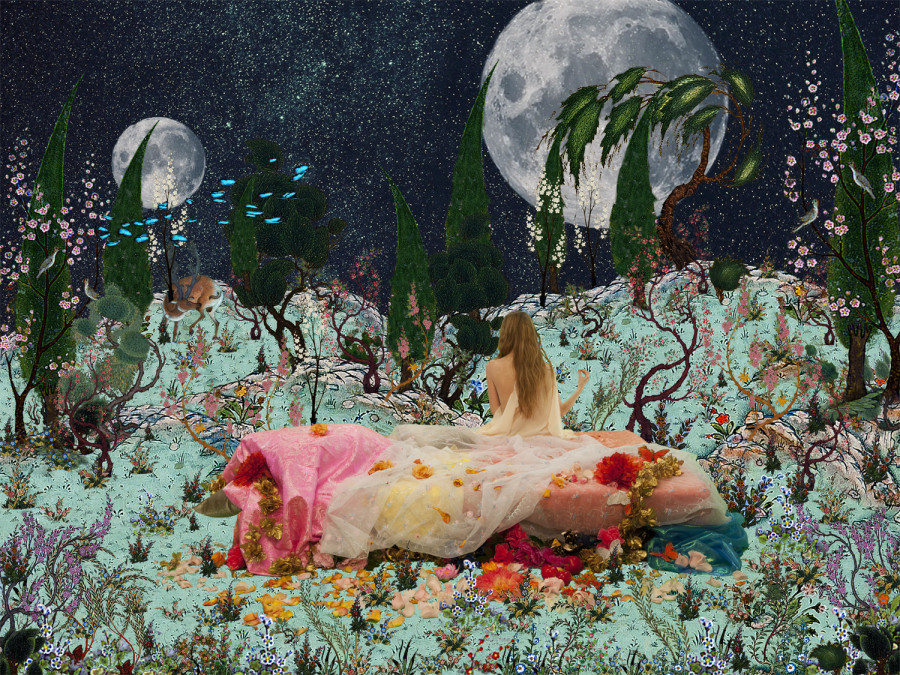
Banquette of Houries (The King of Black), 2013, Lenticular 3D depth on Acrylic sheet, 30 x 41.5 in / 76.2 x 105.41 cm
Azari, who was born in Shiraz, Iran, trained as a filmmaker in New York in the 1970s before returning to Iran for the Revolution in 1979. Azari then permanently returned to the U.S., where he later became artistic and romantic partners with iconic photographer Shirin Neshat. The two have collaborated on works since 1997, though Azari has specified their relationship "should not overshadow the reading of his work."
Azari is well known for his films, which are based on political subject matter, but operate aesthetically more like a painting than a news segment. Along with artistic collaborator Shahram Karimi, Azari conflates the practices of painting and video, projecting loops of film onto canvases that have already been painted with an approximation of the still image. Layering the moving and frozen images to conjure something in between, his "video paintings" formally echo his thematic penchant for layering media, eras and perspectives to simultaneously quote and comment on what came before him.
In "Fake -- Idyllic Life," Azari weaves together disparate sources all the way from art history to today's news, including 16th century Persian miniature painting, Orientalist artworks a la Jean-Léon Gérôme's "The Snake Charmer," and scenes of contemporary violence grabbed from YouTube. In his 25 minute film "The King of Black," Azari renders a grand Islamic vision of heaven in vibrant hues. The resulting piece, based on Persian poet Nizami Ganjav’s 1197 piece "Seven Beauties," combines the aesthetic doctrines of western silent film with the hyper-saturated palette of 16th century Persian paintings, ending up somewhere between past and present, as well as between two and three dimensions.
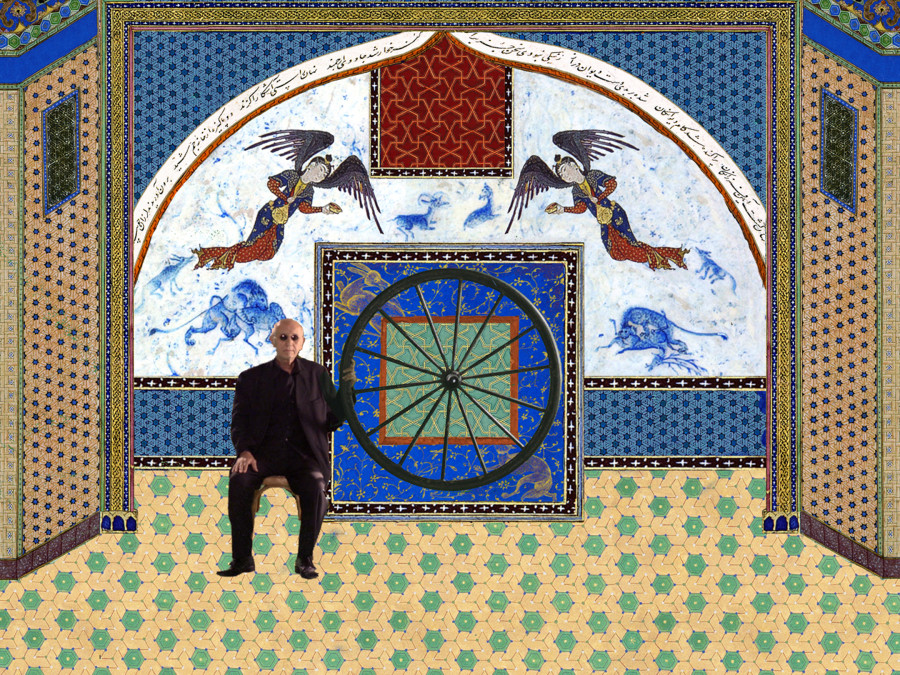
Toil (The King of Black), 2013, Lenticular 3D depth on acrylic sheet, 30 x 41.5 in / 76.2 x 105.41 cm
The surrounding walls of Azari's exhibition are plastered with images found in Google searches related to terrorism, commenting on the Middle Eastern imagery which makes its way west, preventing so many westerners from ever moving beyond a basic misunderstanding of Middle Eastern culture. Azari employs visual and literary tools as an independent but valid form of power existing outside identity politics.
"Faced with an increasingly hostile world governed by identity politics," he explained to Leila Heller Gallery, "I approached this new series as a way to examine assigned and reassigned identities in relationship to power, by finding the proper visual and literary context as it relates to now and to the past."
The show does not answer the question of how westerners view the Middle East with finality, but begins to show the kaleidoscopic influences that shape such an idea -- influences too manifold to grasp.
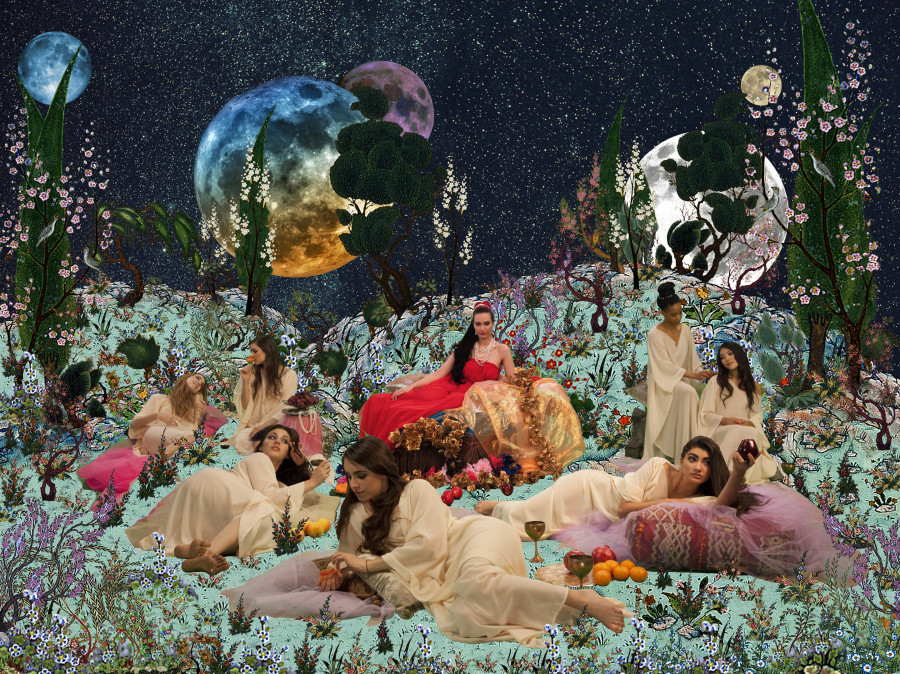
The Heavenly Bed (The King of Black), 2013, Lenticular 3D depth on Acrylic sheet, 30 x 41.5 in / 76.2 x 105.41 cm

Queen of Houries (The King of Black), 2013, Lenticular 3D depth on acrylic sheet, 30 X 41.5 in / 76.2 x 105.41 cm
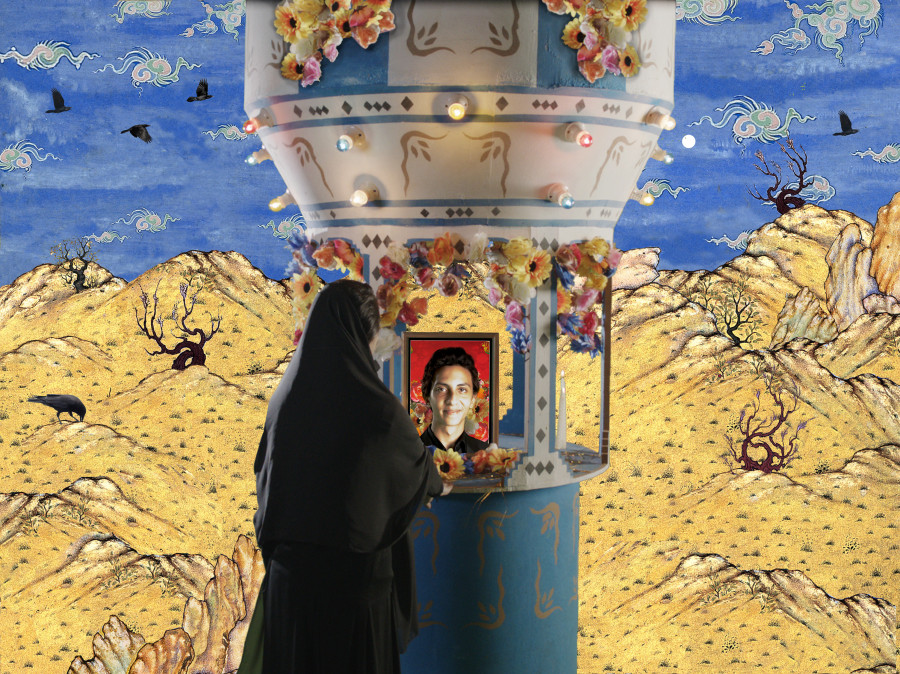
Hijlah or Unconsummated Love (The King of Black), 2013, Lenticular 3D depth on Acrylic sheet, 30 x 41.5 in / 76.2 x 105.41 cm
"Fake - Idyl Life" runs until December 14 at Leila Heller Gallery.
